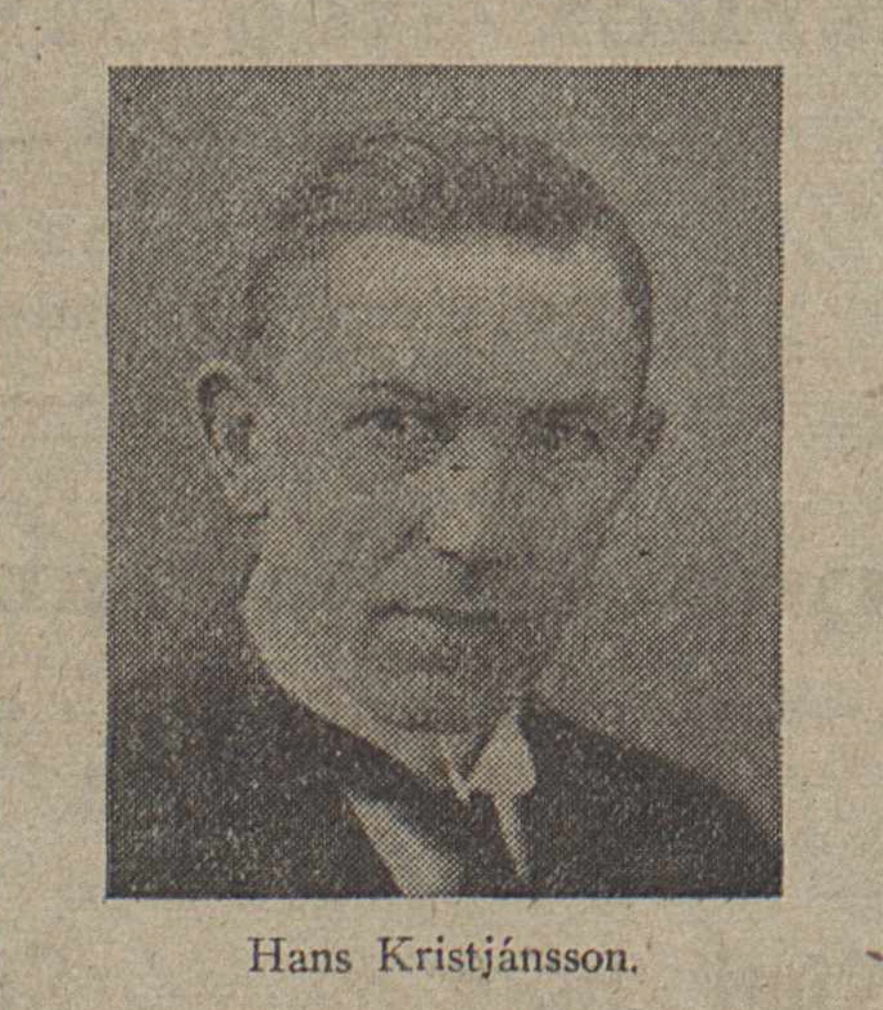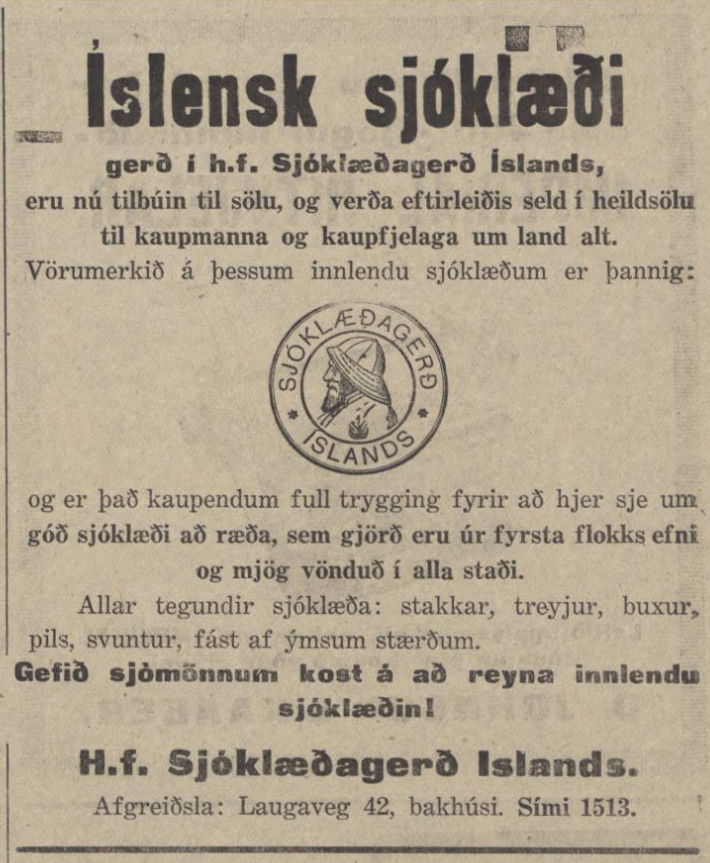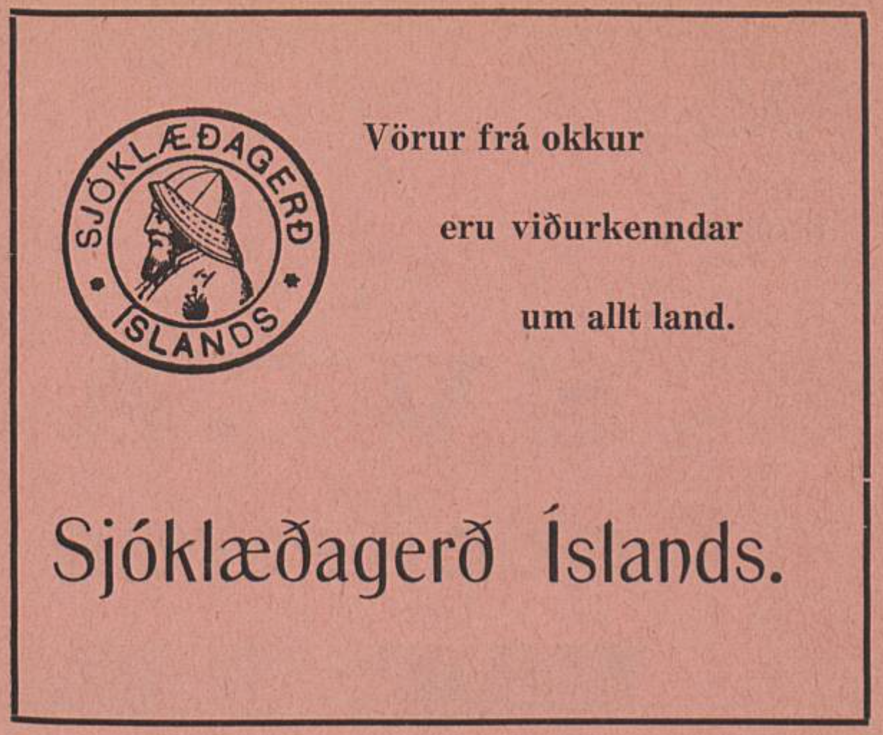
The History of 66°North: Keeping Iceland Warm for a Century
66°North is known around the world for keeping people warm in a stylish way and has, in recent years, become an indispensable part of visiting Iceland. Its fascinating history stretches back nearly 100 years, from its humble beginnings in a tiny workshop in the Westfjords to a successful global brand.
With 11 stores located around Iceland, visitors would be remiss not to return home without a piece of clothing from 66°North, whether it be just a simple beanie or a parka that will keep you warm for decades. Most of their stores are located in the capital, so you can easily visit them from your accommodation in Reykjavik. Their clothes are perfect to wear on self-drive tours in Iceland, as you explore the country in your rental car.
If you're a customer of Guide to Iceland, you can get an exclusive 20% discount at all 66°North stores in Iceland by using the VIP Club of Guide to Iceland and claiming your offer at the store!
Many don't realize that 66°North is more than just a clothing store. It's been part of Iceland's history for an entire century. Its origins reach back to a time when Iceland's society relied on the fishermen who risked their lives out at sea to keep the nation fed.
As the years went by, the target market for 66°North's clothing expanded from the fishing industry to rescue teams, mountaineers, hikers, and eventually the general public. It has gained a reputation for providing both useful and fashionable clothing that anyone could wear. But how did it all begin? Keep reading to learn all about the history of 66°North.
The Early Years - Sjóklæðagerð Íslands (1924-1977)
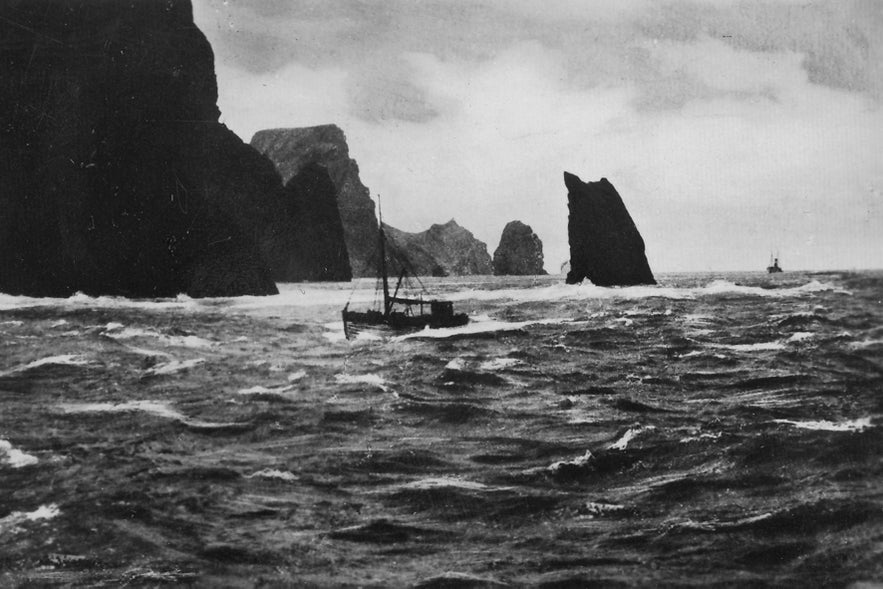
A 10x15 cigarette card featuring a boat fishing in the fjords of Iceland.
Until the modern comforts of the late 20th century, living in Iceland was harsh. People had to deal with ruthless weather, natural disasters could happen without warning, and the soil was not always reliable enough to provide a fruitful crop. Therefore, just one bad summer could result in famine.
The only dependable way to provide food for the people of Iceland for over 1000 years was to go fishing in its surrounding waters. However, without modern technology, going out to sea was a dangerous endeavor. The fishermen could get lost in the dark, wash away in powerful storms, or simply freeze to death during the cold winters. One of the most important factors to keep fishermen safe while out at sea was waterproof clothing that kept them warm and protected them from the elements.
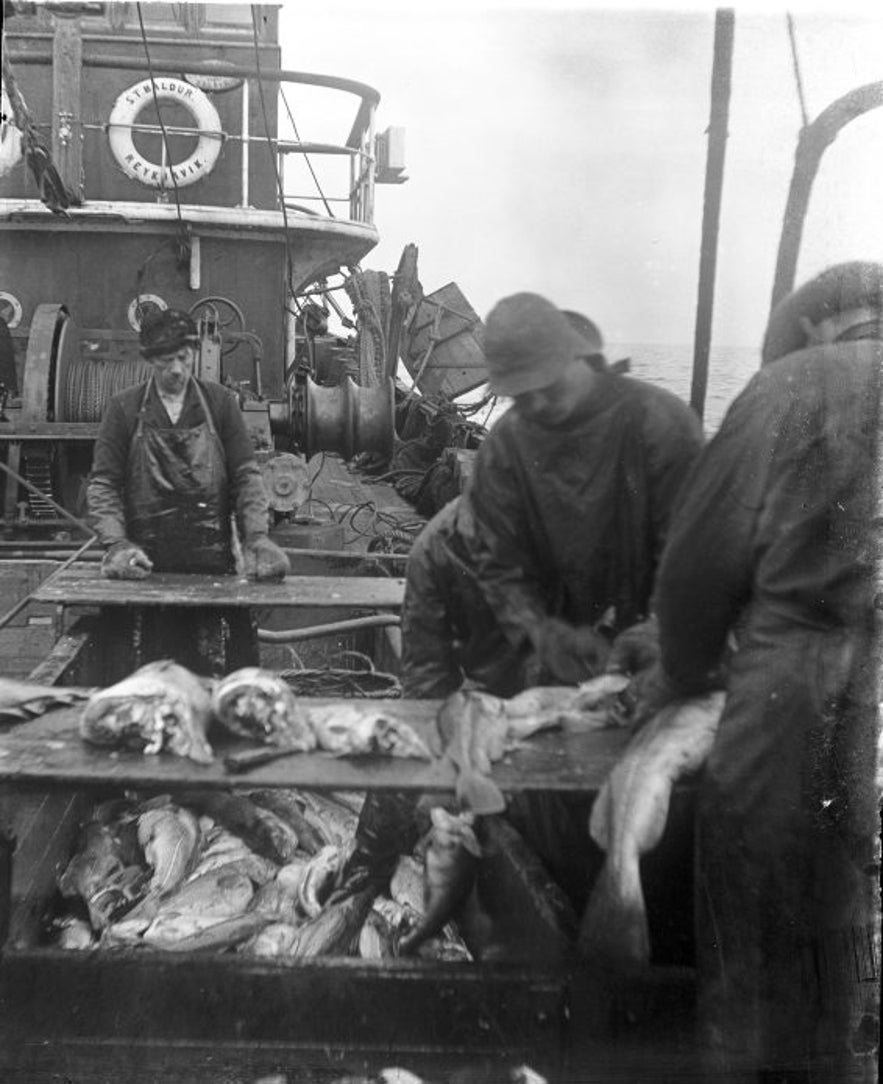
Icelandic fishermen working on the trawler Baldur, from 1912.
During the late 19th century, waterproof clothing using oilskin was invented, a method of painting cloth with a mixture of linseed oil and wax, making them water-repellent. Icelanders soon started using oilskins to keep them safe at sea. However, there were no local manufacturers of oilskin suits, which meant they had to be imported from Scandinavia. Additionally, when a piece of clothing got damaged at sea (which was common), there was no way to get it fixed, meaning Icelanders would simply throw it out.
This prompted the Association of Icelandic Fisheries to send a representative to Norway to study the manufacturing of oilskin clothing to save money on buying them from abroad. They funded a young fisherman from Sudureyri, Hans Kristjánsson, a whopping amount of 1000 krónas to travel to Norway in 1923 to learn about the manufacturing of this important piece of clothing. When he returned to Iceland, he immediately started making oilskin clothing in a small workshop in his hometown.
Hans Kristjánsson (1891-1952), the founder of Sjóklæðagerð Íslands (66°North). This photograph appeared in a newspaper in 1933.
By the end of 1924, Hans had managed to sew together about 50 sets of oilskin clothing (coats and overalls), some of which he sent to the Association of Icelandic Fisheries for evaluation and the rest he sold to the local fishermen in the Westfjords. Immediately, they became very popular among the locals, gaining the reputation that they were no less reliable than their foreign counterparts, with some fishermen remarking that the clothing felt softer and more comfortable to wear.
The rising popularity of his clothing prompted Hans to establish the company Sjóklæðagerð Íslands (Seawear Workshop of Iceland) in June of 1925. This was the basis of the company that would later be renamed 66°North.
The first documented advertisement for Sjóklæðagerð Íslands was published on November 15th, 1925.
When Hans established the company, he moved production from Sugandafjordur bay to Reykjavik and opened up a store on Laugavegur 42. Four seamstresses were hired to make the clothes using electric sewing machines, the first of their kind in Iceland. By the end of the year, the company had made over 2000 pieces of clothing as well as some oilskin aprons used for fish processing, which also proved popular. Just a couple of years later, in 1928, the company started supplying Iceland's search and rescue teams with clothing, a cooperation that remains to this day.
Hans came up with a method of using varnish on the outer layer of the clothing, rather than lacquer, which was used in Norway, resulting in clothing that lasted longer. Sjóklæðagerðin also offered to repair old and torn oilskin clothing, kicking off 66° North's ongoing goal of preventing waste.
An advertisement from 1937. The caption translates to "Our products are recognized all over the country."
By 1933, the company had expanded to about 35 employees, providing clothing for the fishing industry all around Iceland. By this time, the company had started making clothes for, not just workers, but the general public as well. They started manufacturing raincoats with the same shiny outer layer as the seafaring apparel, which proved useful for Icelanders in their day-to-day lives. They had also started making skirts, pants made of wool and protective clothing for children.
For the next few decades, the company continued making clothes for the booming Icelandic fishing industry while expanding the selection of clothes for daily life even further. In 1967, they started manufacturing nylon raincoats, which quickly became popular in Iceland and were noted for their vibrant colors and breathability.
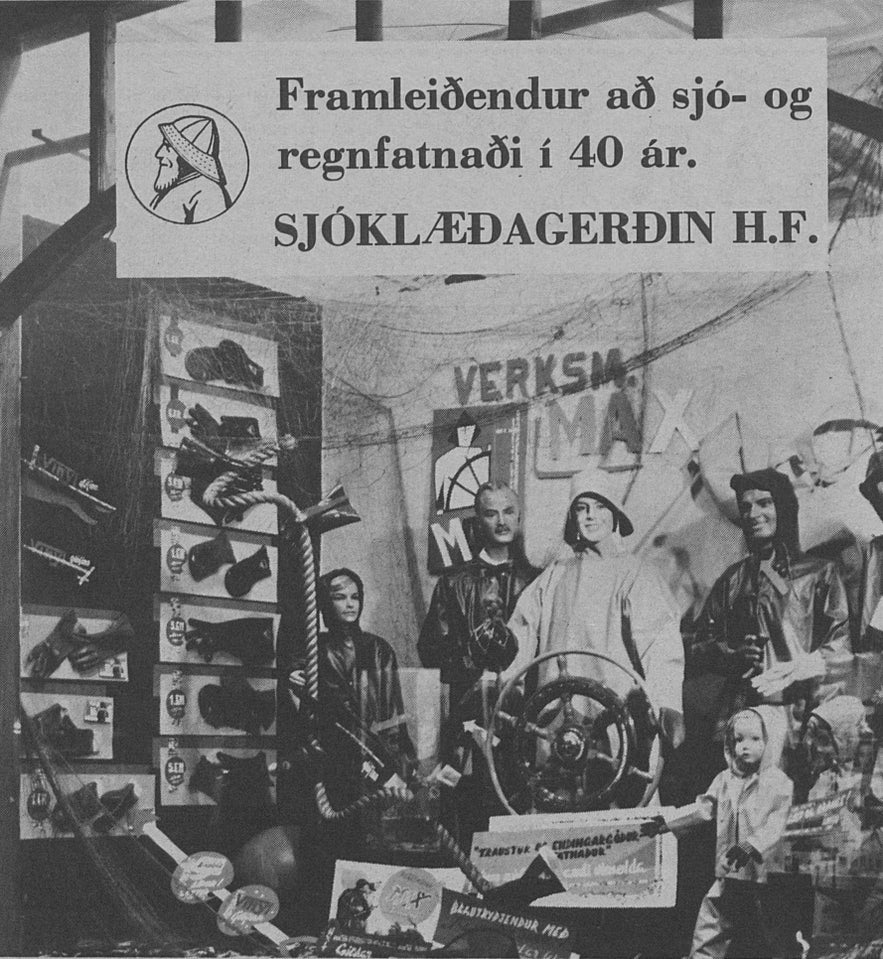
An advertisement from 1972. The caption reads "Manufacturers of sea- and rainwear for 40 years."
In 1969, they sent some of the raincoats to distributors in Germany and got great feedback for their high quality. Shortly thereafter, the company struck a deal with the Canadian department store chain Eaton's to sell their raincoats and the partnership turned out to be very successful, as the raincoats got sold out every season.
The rising popularity of daily outerwear, which was outselling the fishing industry clothing at this point in time, as well as the possibilities of expanding sales outside of Iceland, prompted a rebrand that would eventually become successful worldwide.
The Modern Era - 66°North (1977-2024)
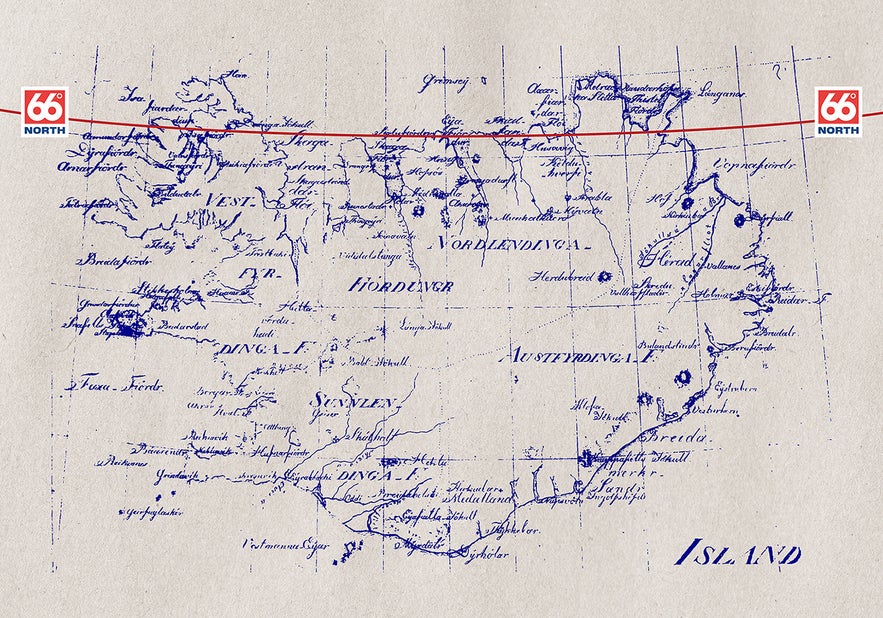
The 66th-degree northern parallel goes right through Sudureyri, the village where Hans Kristjánsson started his workshop in 1924.
The brand name 66°North (66°Norður in Icelandic) marked a fresh, new direction for this well-established company in Iceland. Of course, it still stayed true to its roots and kept on (and still is) manufacturing working clothes for fishing and various other outdoor industries. The rebranding of the company was announced in a full-page newspaper ad on September 25th, 1977, which marked the first appearance of the brand's now-iconic 66°N logo.
The name "66°North" is a nod to the company's humble beginnings in 1924. The workshop where Hans Kristjánsson started sewing clothes was located in the village of Sudueyri in the Westfjords, which is on the 66th-degree northern parallel (seen in the image above), right on the edge of the Arctic Circle.
That way, the company could move on from the original name "Sjóklæðagerðin" (The Seawear Workshop), which had become ill-descriptive of the wide array of different clothing that the company was selling, while still staying true to its origins.
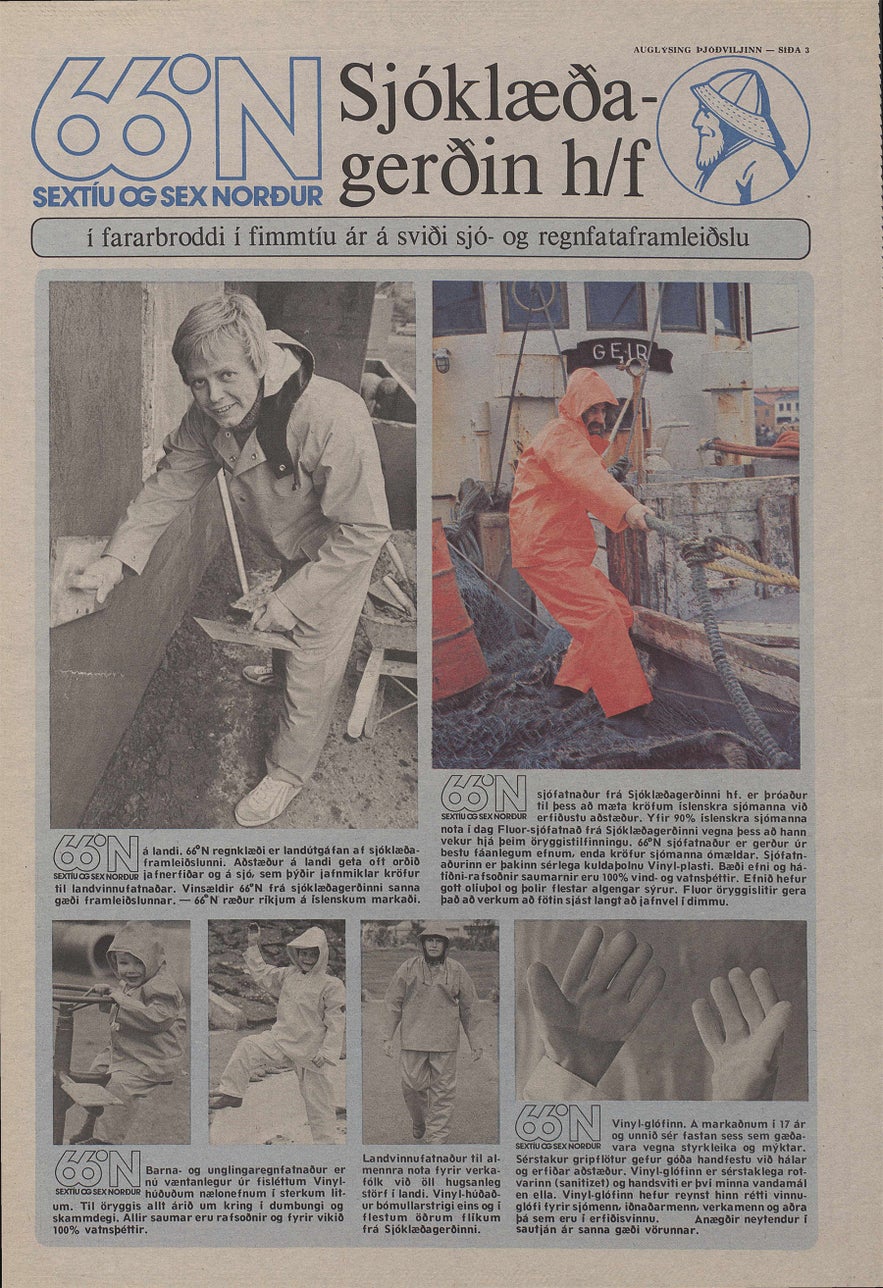
A full-page newspaper ad from 1977 announcing the rebranding of Sjóklæðagerðin to the name it's known worldwide today, 66°North (66°Norður in Icelandic).
About 300 people were working for 66°North around the time of the name change, and business was booming locally, providing Icelanders with day-to-day outerwear while continuing the expansion into foreign markets.
In the early 1980s, the competition in Iceland became tougher as imported outerwear made with cheaper labor started being sold in Icelandic stores. This prompted the company to rethink its strategy and focus on promoting that not only do their clothes keep you warm, but also the high quality and longevity of their clothes, which has continued on today with 66°North's circular philosophy when it comes to sustainability.
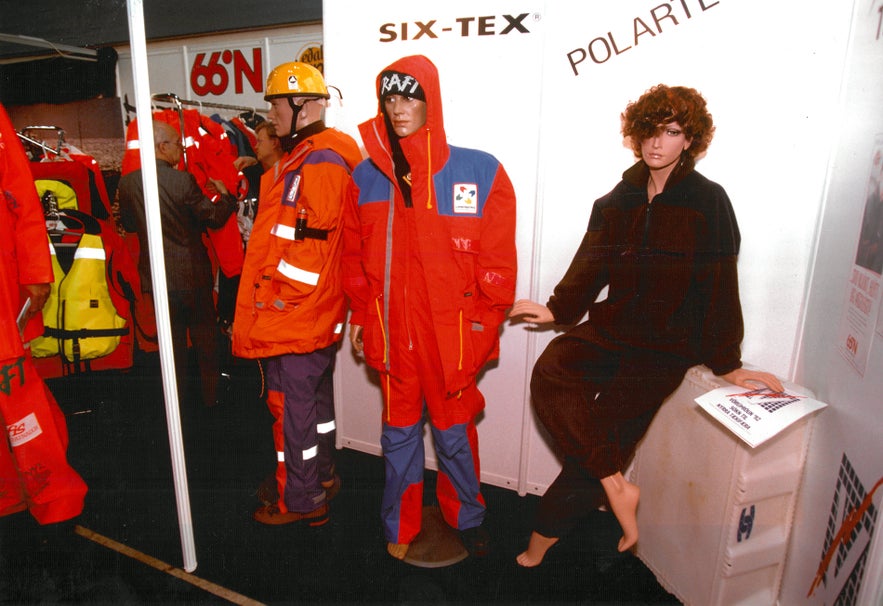
66°North's display booth at a trade fair in Reykjavik in 1992, showing off both casual wear and outerwear used by Iceland's search and rescue teams.
A growing collaboration with the various rescue teams in Iceland also helped establish the credibility of 66°North as being the outerwear of choice for anyone embracing Iceland's most extreme weather conditions. The search and rescue teams in Iceland risk their lives helping people who have become stranded in dangerous situations and it's imperative that the rescuers keep themselves warm to be able to do their job.
With the introduction of fleece and gore-tex to the range of fabrics used by 66°North in the 1990s, they started manufacturing more warm indoor clothes, such as sweaters and vests, as well as expanding their outerwear with breathable and heat-retaining jackets and pants.
The Kraft snowsuit became hugely popular in Iceland in the 80's and 90's (seen below), making "Kraftgalli" (Kraft suit) a genericized trademark for snowsuits in Iceland. As the years went by, the image of 66°North became more than a utilitarian outerwear company to a legit fashion brand that was deemed trendy and stylish.

These Kraft snowsuits by 66°North became very popular in Iceland during the 1980s and 1990s and remain so today.
By 2010, 66°North had truly become a global brand, with its product being sold in over 500 shops in 15 countries. Consumers started to recognize that 66°North had been creating clothes for the unpredictability of Iceland's extreme weather conditions for decades, meaning if they can keep you warm in Iceland, they can keep you warm everywhere. It became popular not just with outdoorsy people but with anyone who wants to feel nice, warm, and stylish, whether at home or in the office.
As 66°North draws close to its 100th-year anniversary, looking back, the history of the company, in many ways, reflects the history of Iceland. By the turn of the 20th century, Iceland was a little-known fishing nation that relied on its surrounding sea to sustain itself, much like 66°North started out focusing entirely on clothes for fishermen.
As the decades went by, Iceland became known worldwide for its beautiful nature and the creativity of its people, as 66°North became the go-to brand for enjoying the great outdoors while looking stylish.
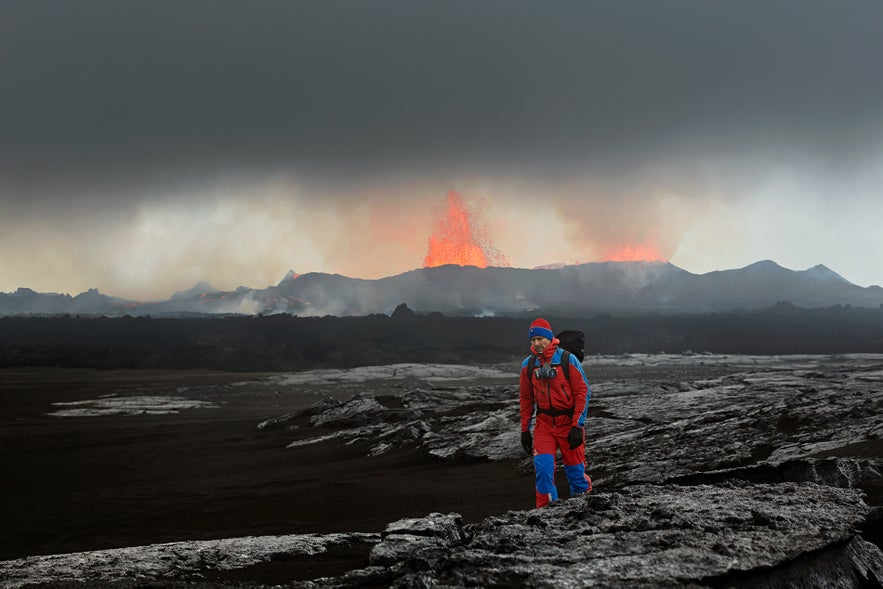
International Celebrities Wearing 66°North
The popularity of 66°North skyrocketed worldwide around the turn of the century, becoming an outerwear brand with a reputation for being both practical and fashionable. Furthermore, it became an indirect symbol of Iceland on a global scale, as many people who visit Iceland won't leave without at least one piece of clothing from 66°North, with celebrities being no exception.
Below, you can see some of the famous people who have been spotted wearing clothes from the iconic Icelandic clothing brand.
Matthew McConaughey (actor)
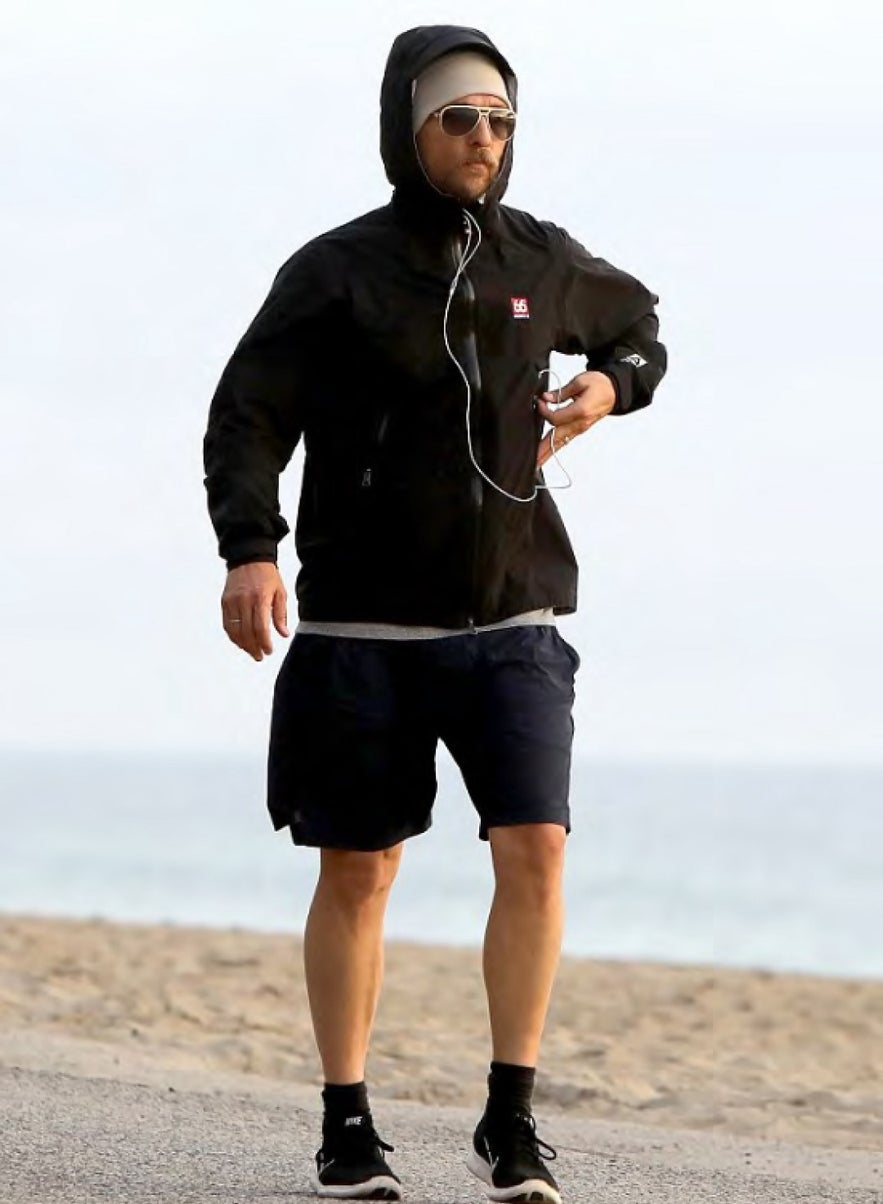
Here, world-renowned actor Matthew McConaughey is wearing the Snæfell jacket, a technostretch hooded jacket, ideal for outdoor activities.
Jake Gyllenhaal (actor)
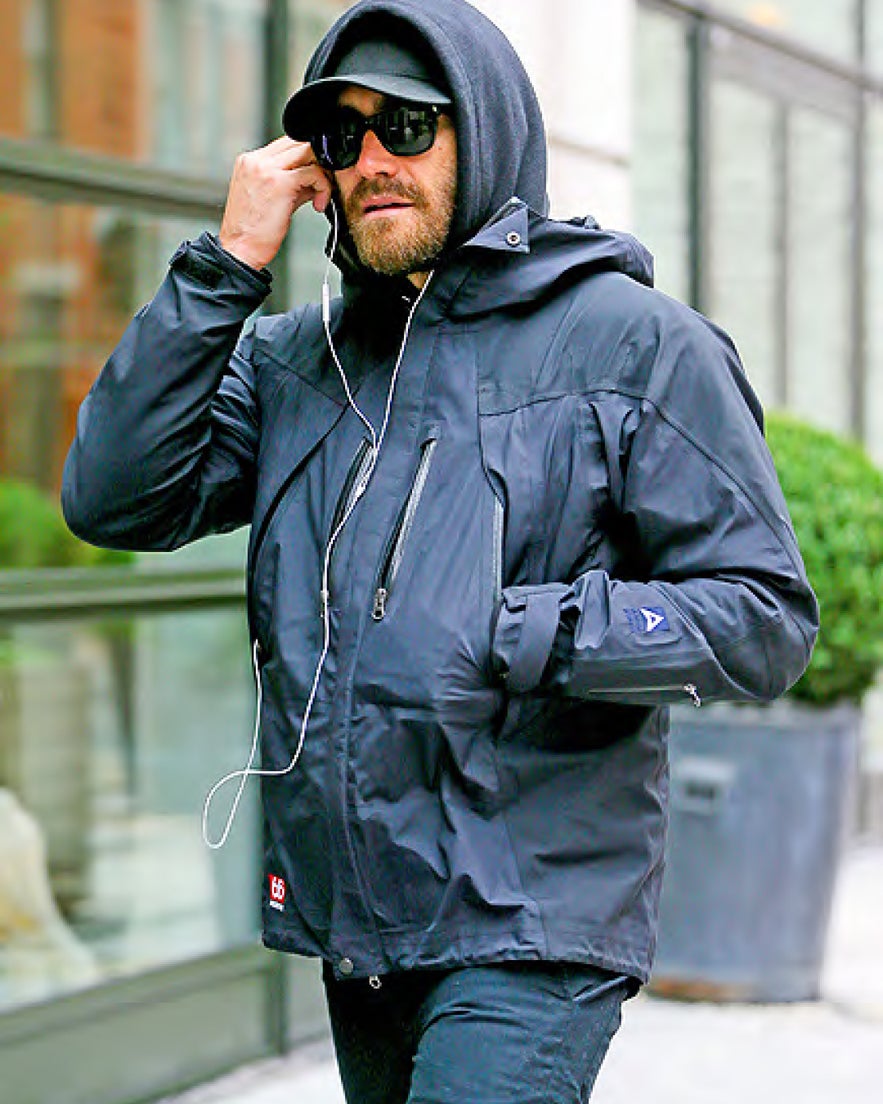
Actor Jake Gyllenhaal is wearing cozy 66°North outerwear similar to the Hornstrandir jacket, which is waterproof because of its three-layer Gore-Tex membrane textile.
Beyoncé Knowles (musician)
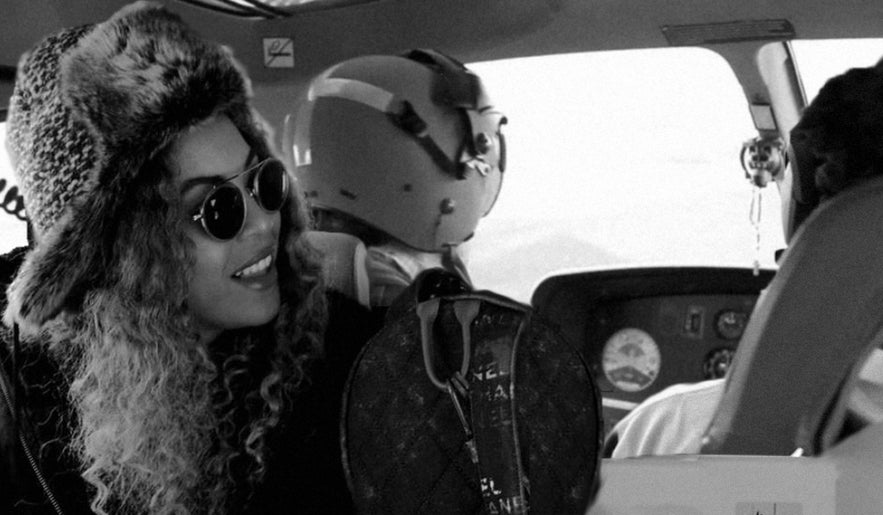
Pop superstar Beyoncé Knowles is keeping her head warm with the Kaldi hat from 66°North, perfect for an arctic climate.
Chris Hemsworth (actor)
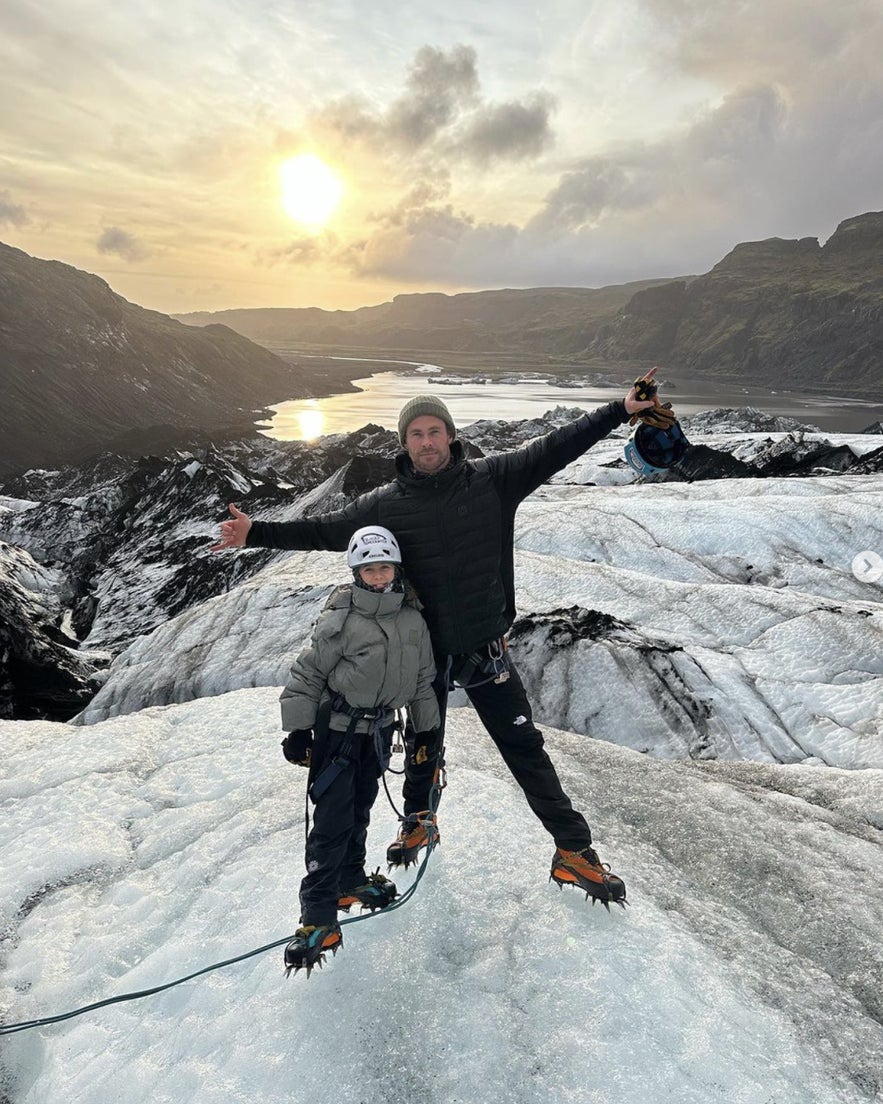
The Avenger Chris Hemsworth is hiking across a glacier in Iceland while wearing an Ok jacket from 66°North. The jacket is much better than just "Ok," as it draws its name from the Icelandic mountain of the same name.
Will Smith (actor)
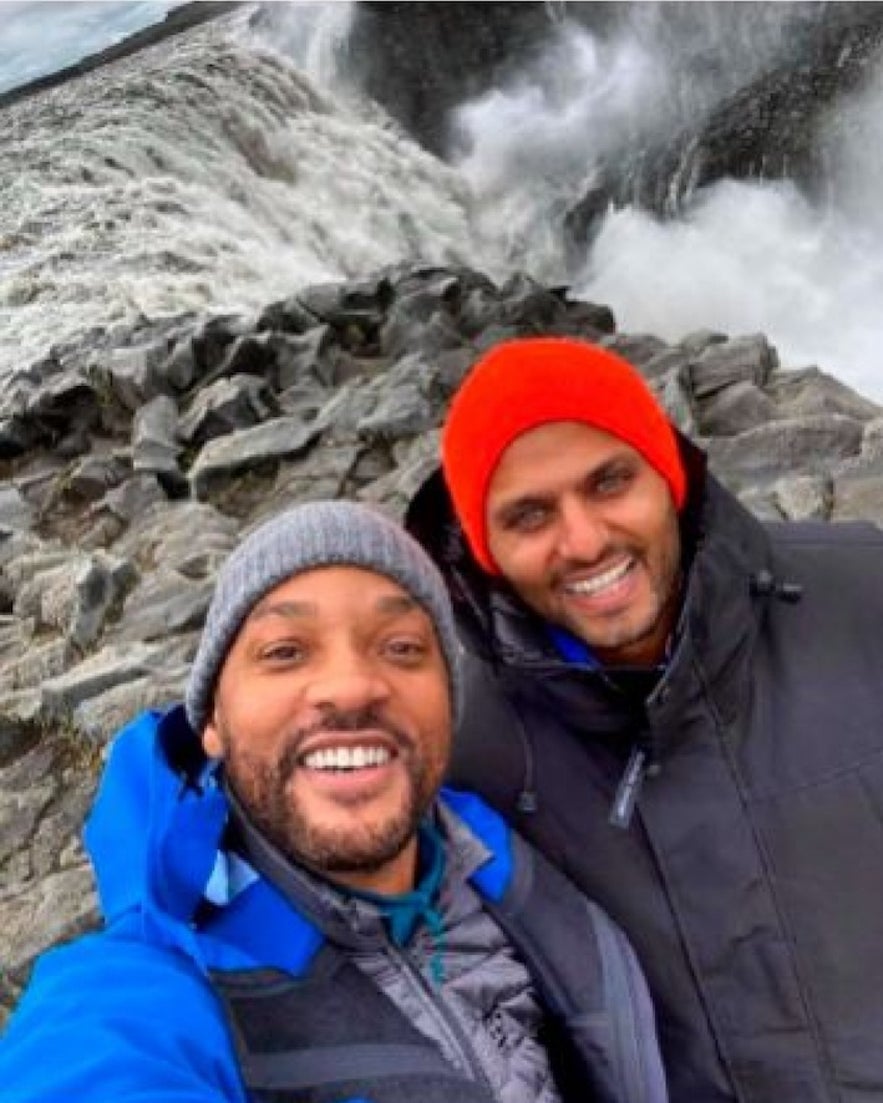
The Fresh Prince himself, Will Smith, is seen wearing an Öxi jacket from 66°North while enjoying the immense power of Dettifoss waterfall in North Iceland.
Frank Ocean (musician)
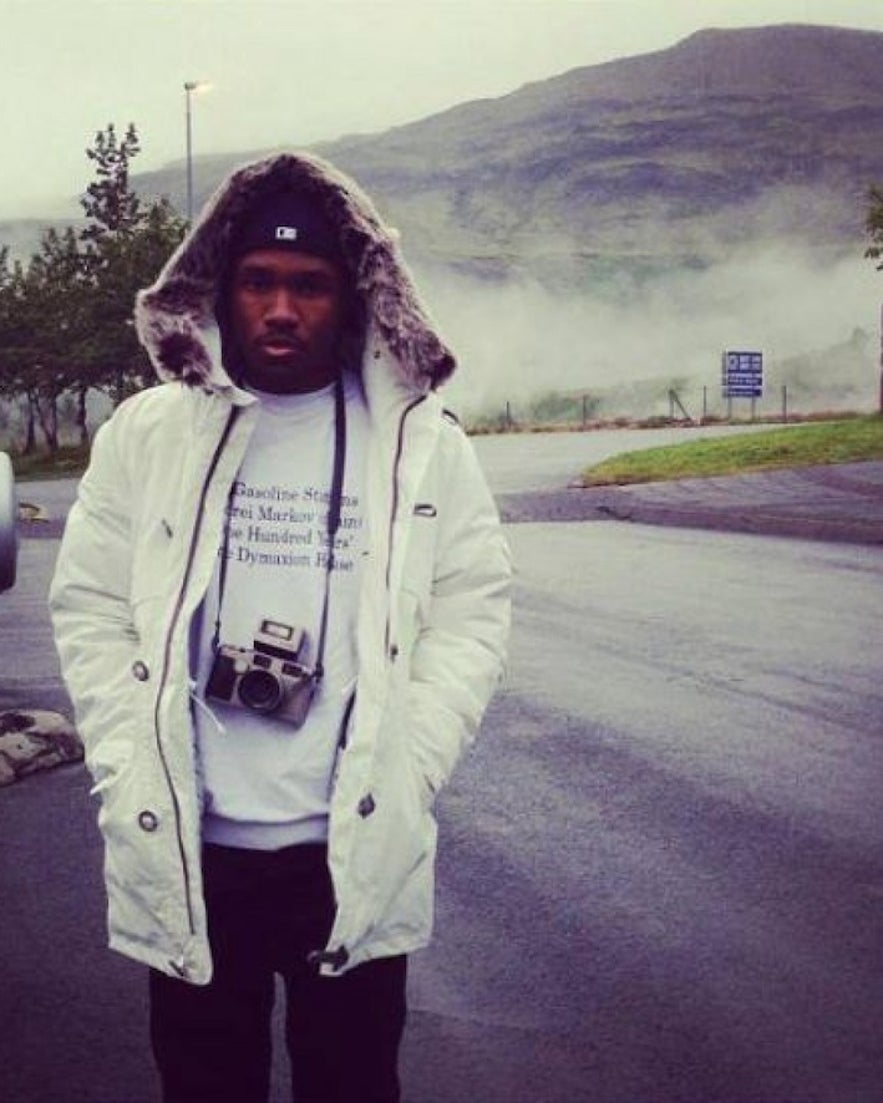 R&B singer Frank Ocean performed in Reykjavik in 2013 and took the time to explore the country a little bit. Here, he is wearing a parka similar to Hofsjökull jacket from 66°North.
R&B singer Frank Ocean performed in Reykjavik in 2013 and took the time to explore the country a little bit. Here, he is wearing a parka similar to Hofsjökull jacket from 66°North.
This was our short overview of 66°North's fascinating 100-year history. Will you try out 66°North while visiting Iceland? If you already have a piece of clothing from 66°North, which is your favorite? Let us know in the comments below!
関連記事
アイスランドの人気ツアー トップ10
アイスランドでは自然の観光がメイン。そしてその自然を間近で体験するにはガイド付きのツアーに参加するのがお勧め!アイスランドに来たら欠かせないオススメのツアーを紹介します。 海外旅行にいつも悩むアクティビティ。現地に着いたら、限られた時間を使いその国の魅力が感じられる、あるいはその国でしかできない体験をしたいものです。アイスランド旅行に絶対外せない体験、訪れてほしい場所をまとめて、紹介したいと...もっと読むリングロードで絶景を巡るアイスランド1周の旅
北海道より少し大きいアイスランド。沿岸部に点在する町や村をつなぐ道路は、国道1号線です。アイスランドを1周することから「リングロード」とも呼ばれています。アイスランドの各地を結ぶ重要な幹線道路であるだけでなく、観光地も多くがこのリングロード沿いにあり、アイスランドを1周する際のルートの目安になっています。 目次 1 - アイスランド南部/レイキャビク→ホプン 2 - アイスランド東部/ホ...もっと読む時間を有効活用!午後出発の人気ツアーベスト6
午前の早い時間にアイスランドに到着する方、午前中をゆっくり過ごしたい方必見!午後にレイキャビクを出発するおすすめのツアーをお届けします! 時間が限られている休日は有意義に過ごしたいものですね。朝の到着で午後一からすぐツアーに参加したいという方もいれば、深夜の到着でできるだけ翌日の遅い時間からツアーに参加したい方もいます。そして、天気が変わりやすいアイスランドは荒天のせいで午前出発のツアーが中...もっと読む

アイスランド最大の旅行アプリをスマートフォンにダウンロード。旅のすべてを1か所で管理できます。
アイスランド最大の旅行マーケットプレイスをポケットに。スマートフォンのカメラでQRコードを読み取り、表示されるリンクをクリックしてください。電話番号またはメールアドレスを入力すれば、SMSやEメールでもダウンロードリンクを受け取ることができます。

